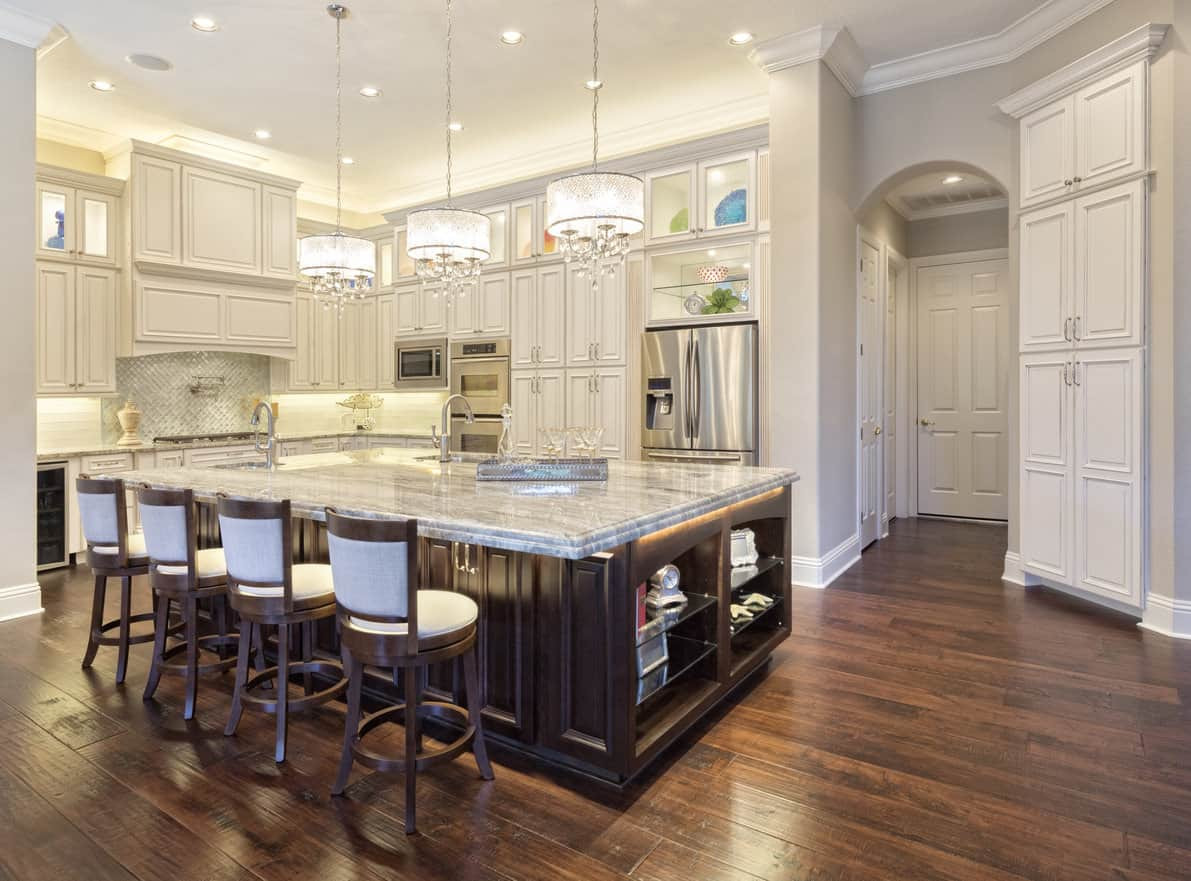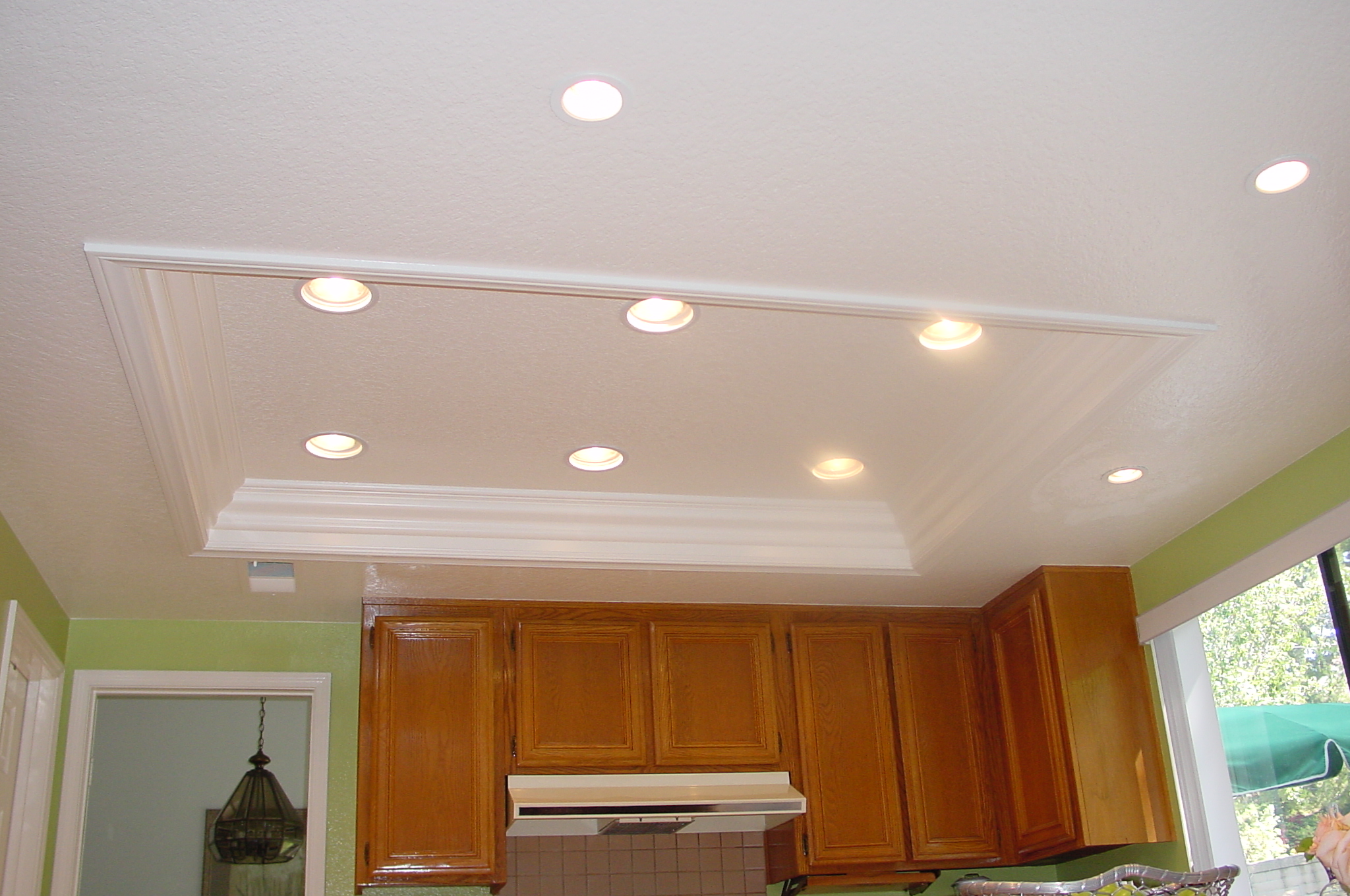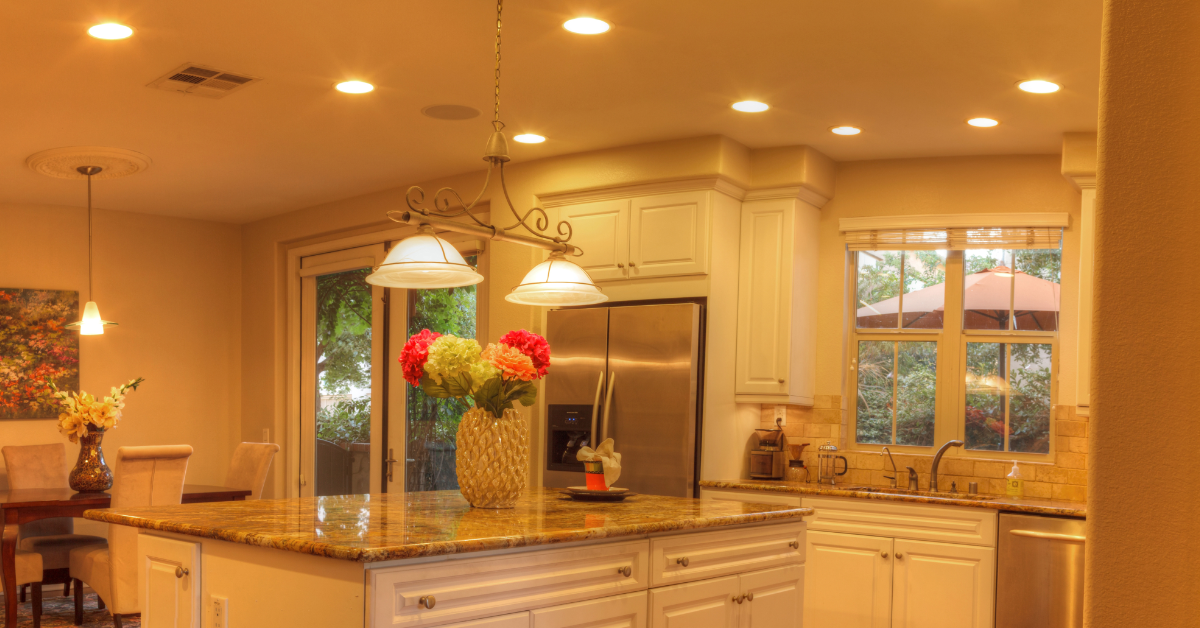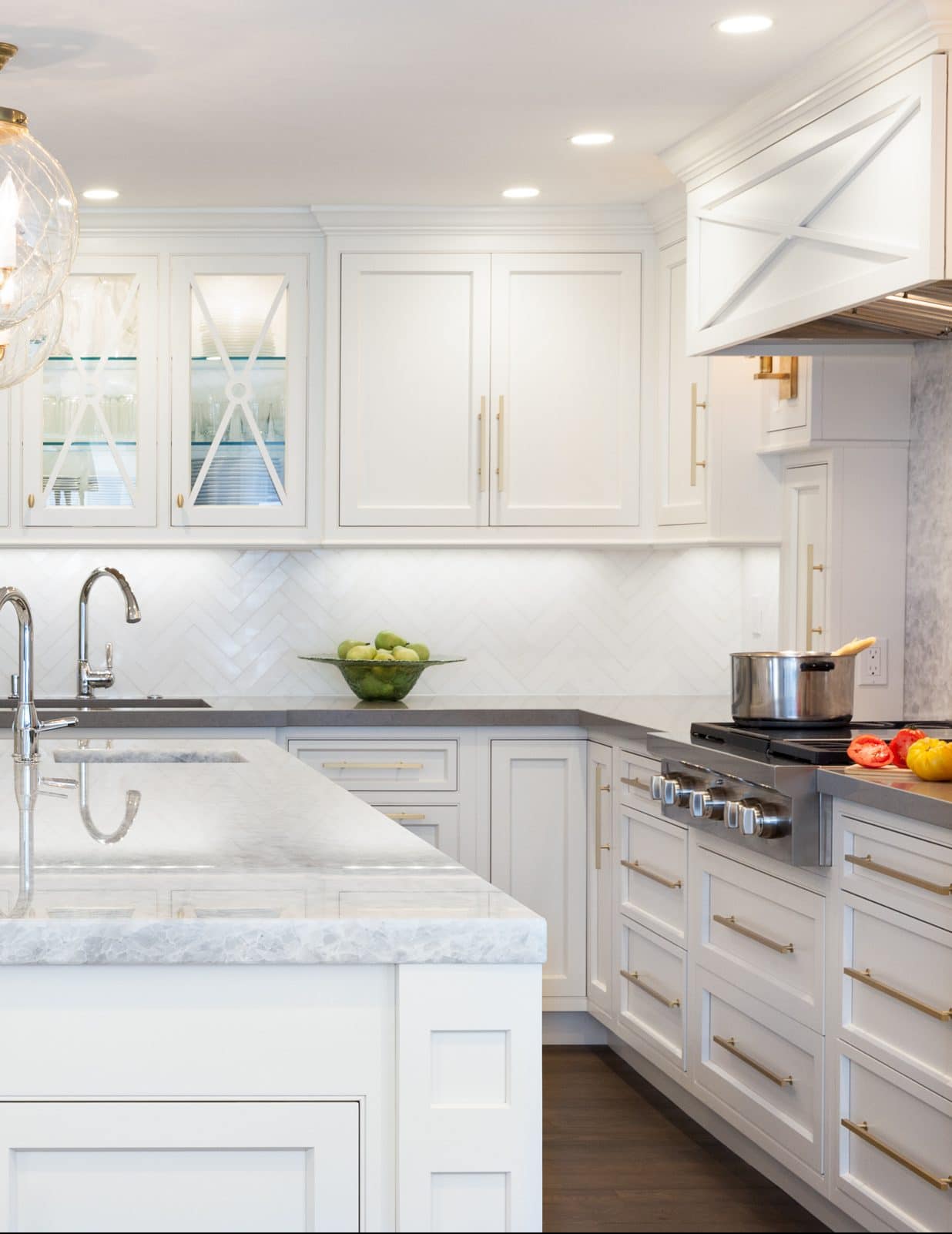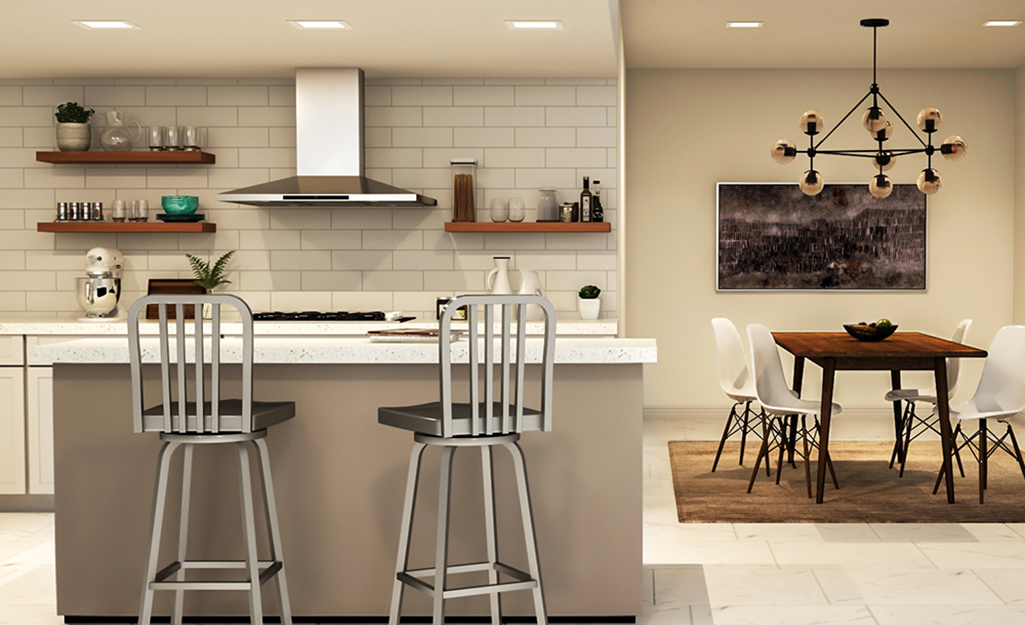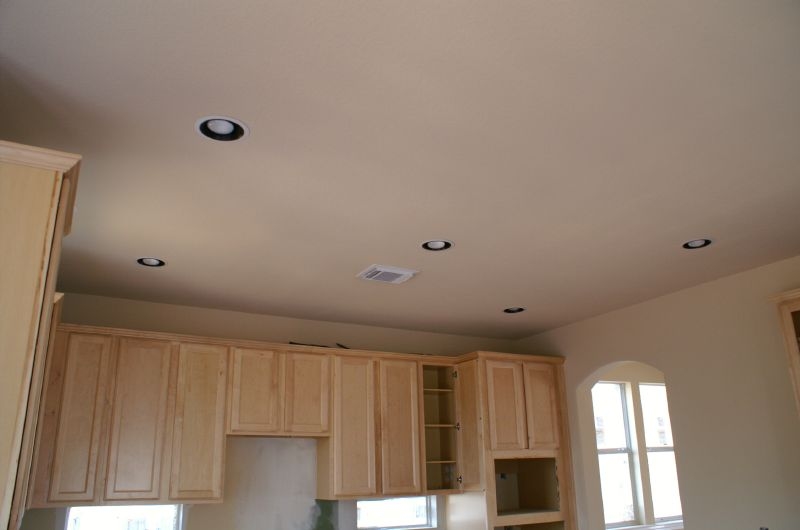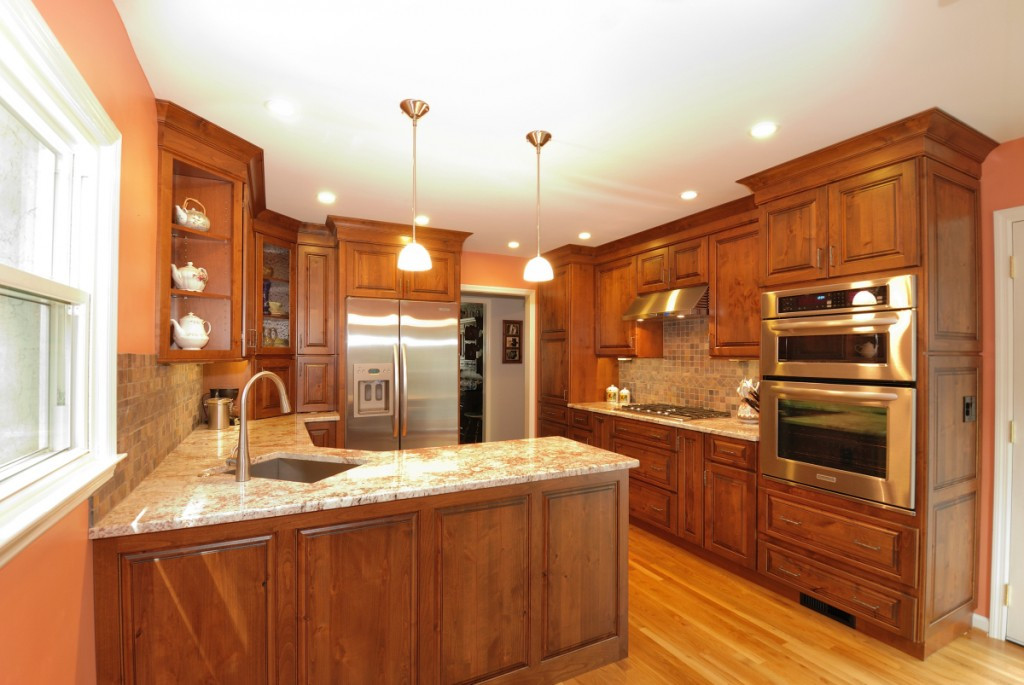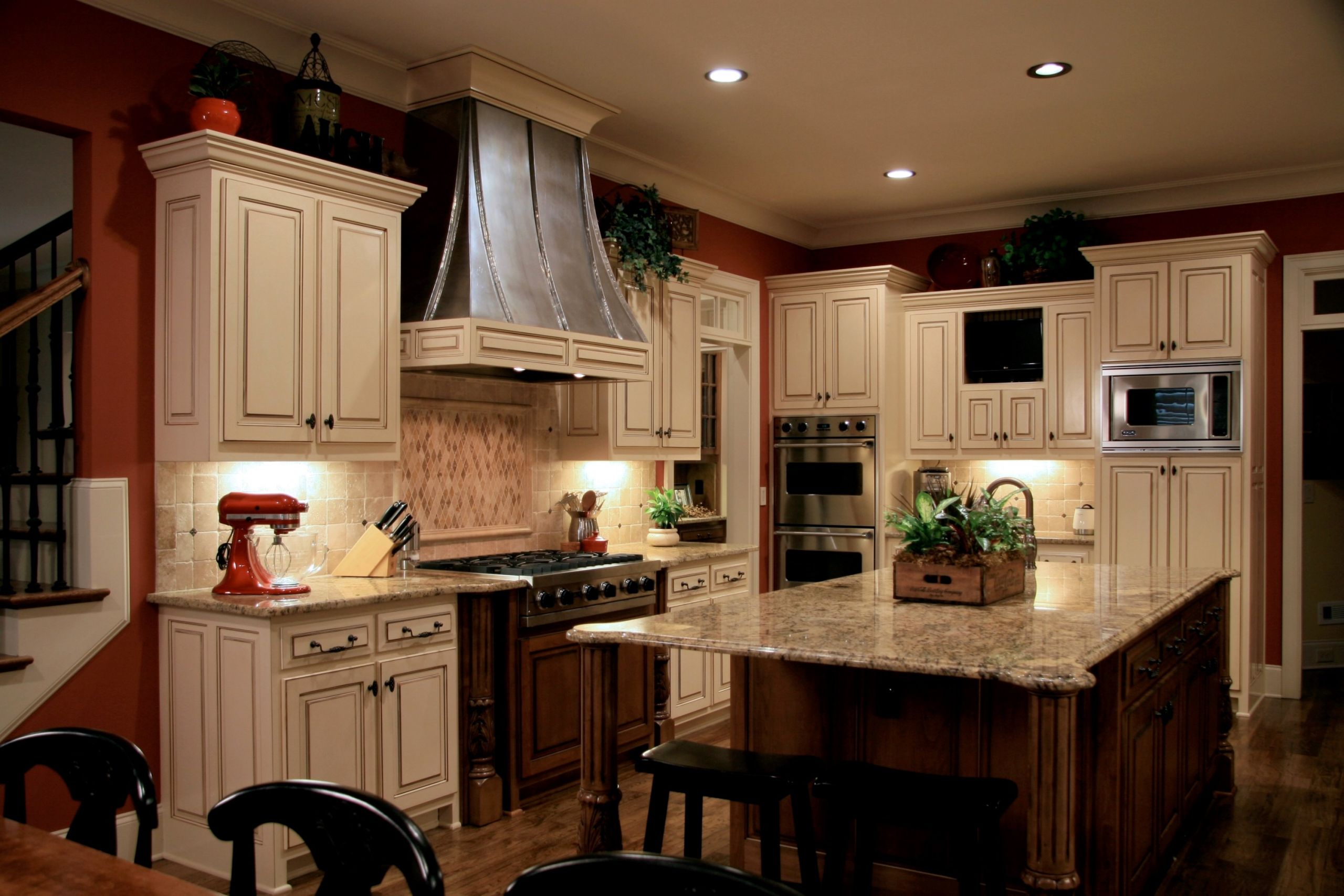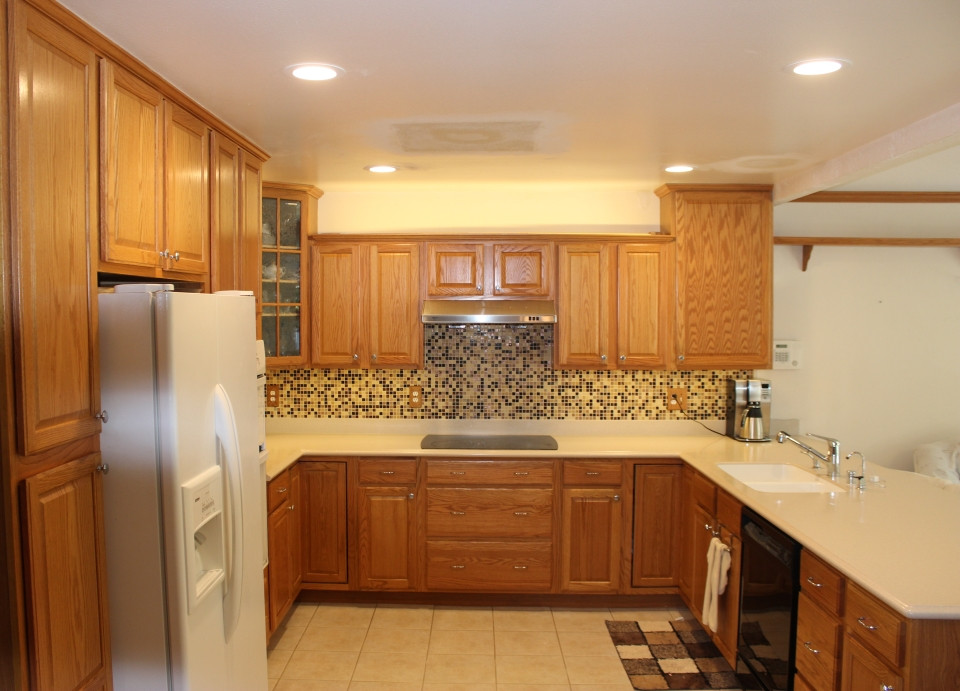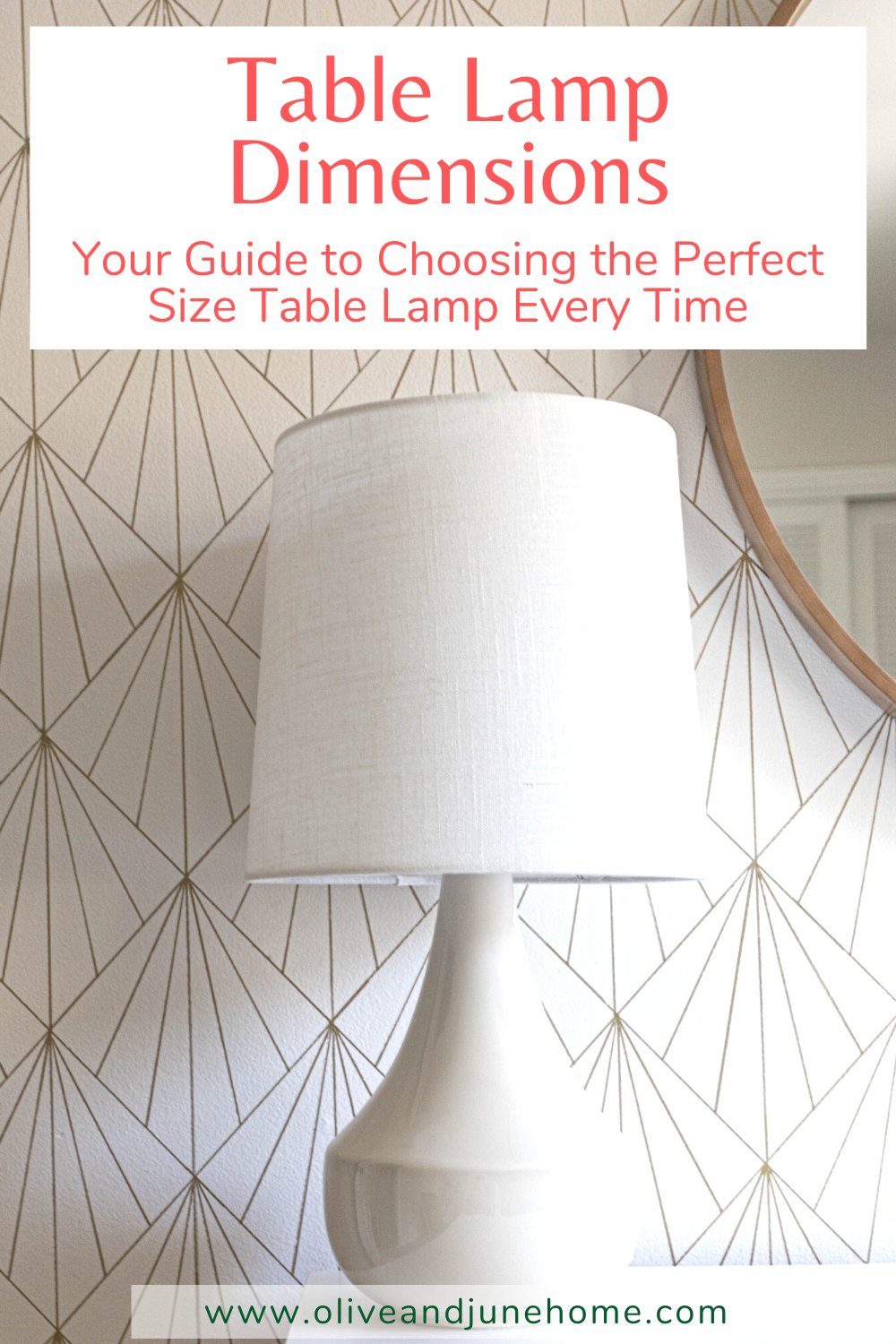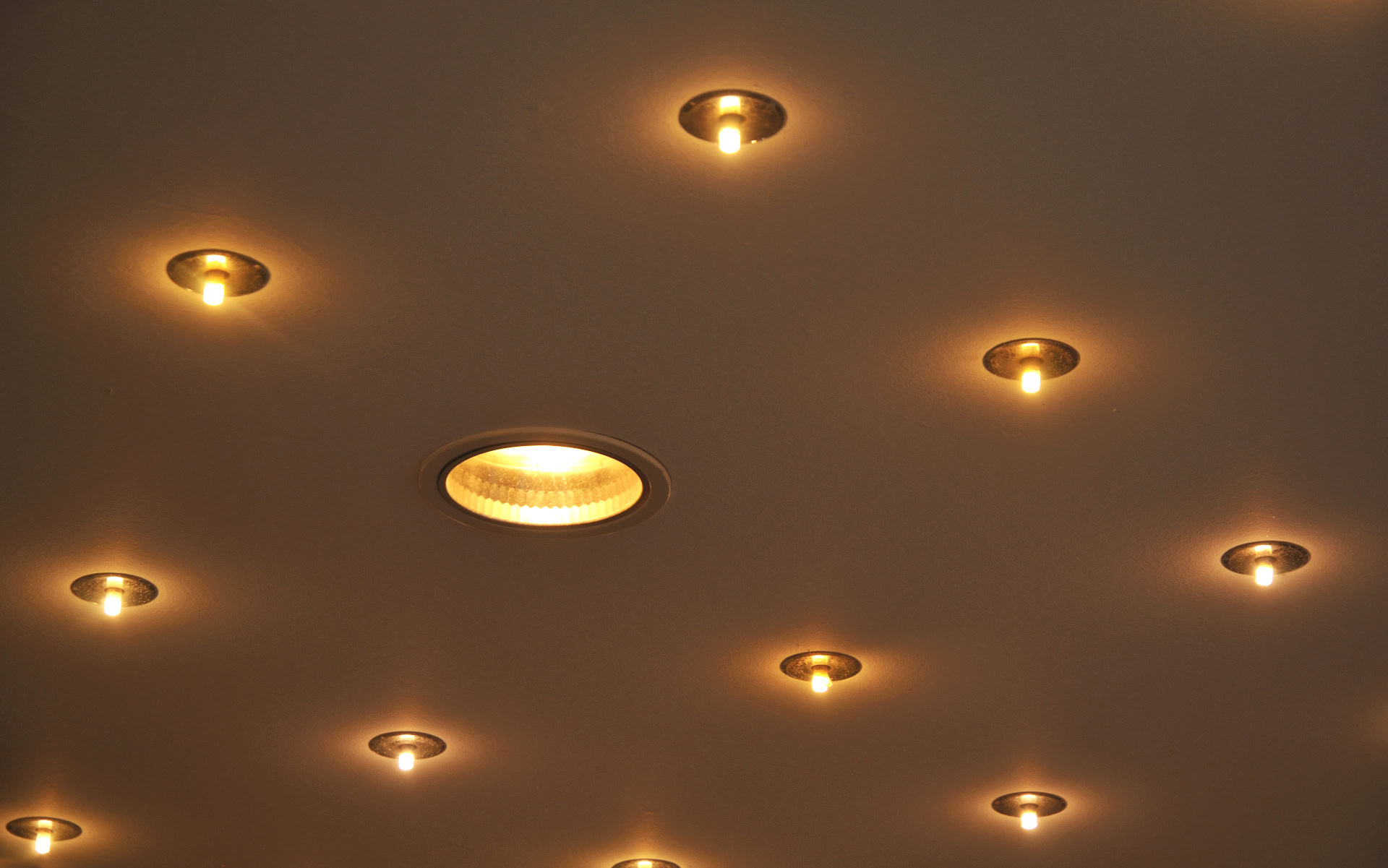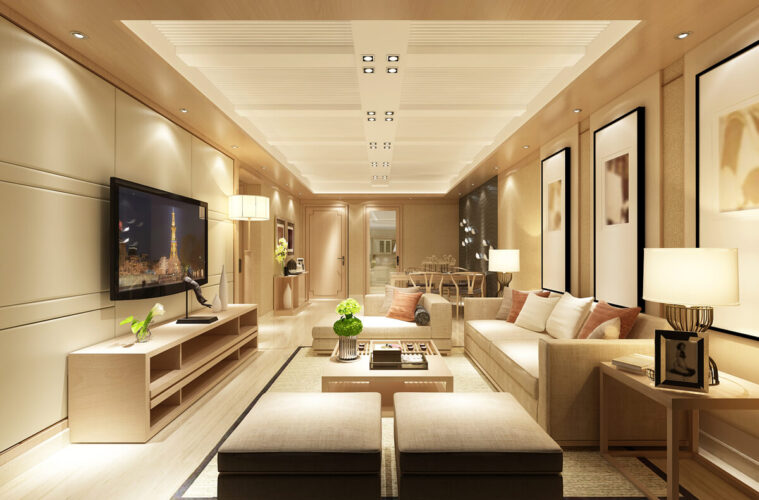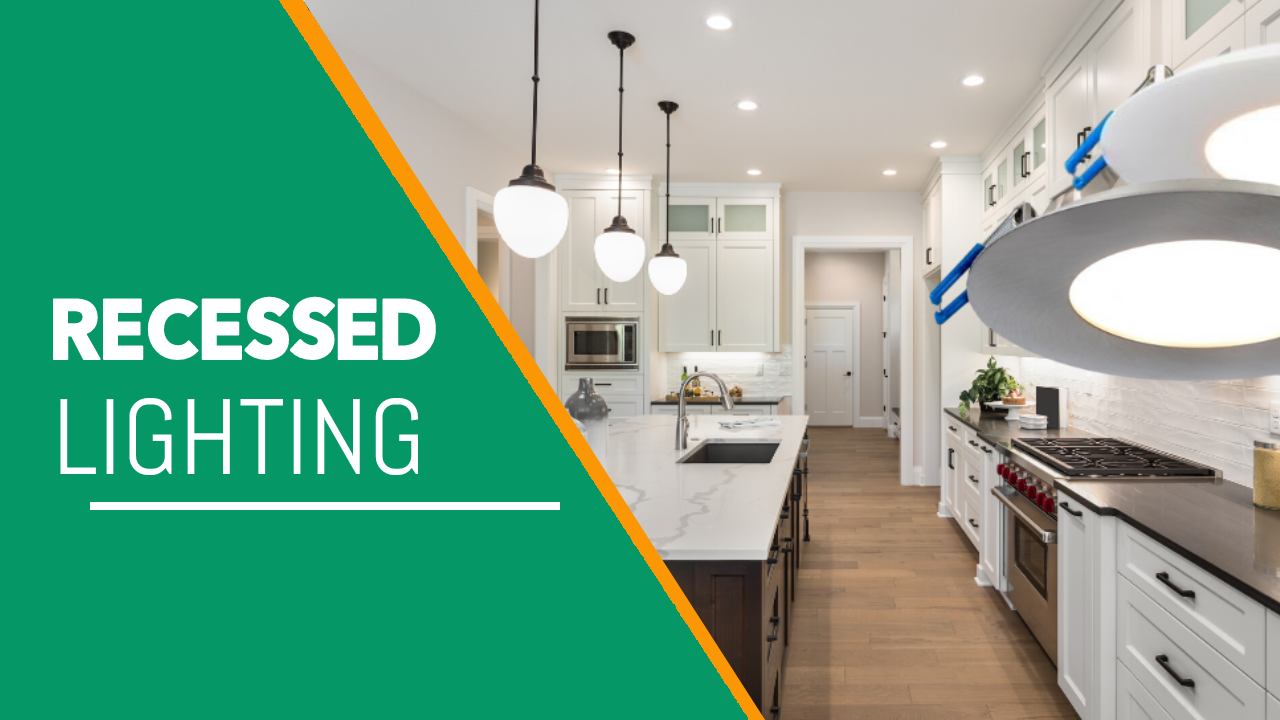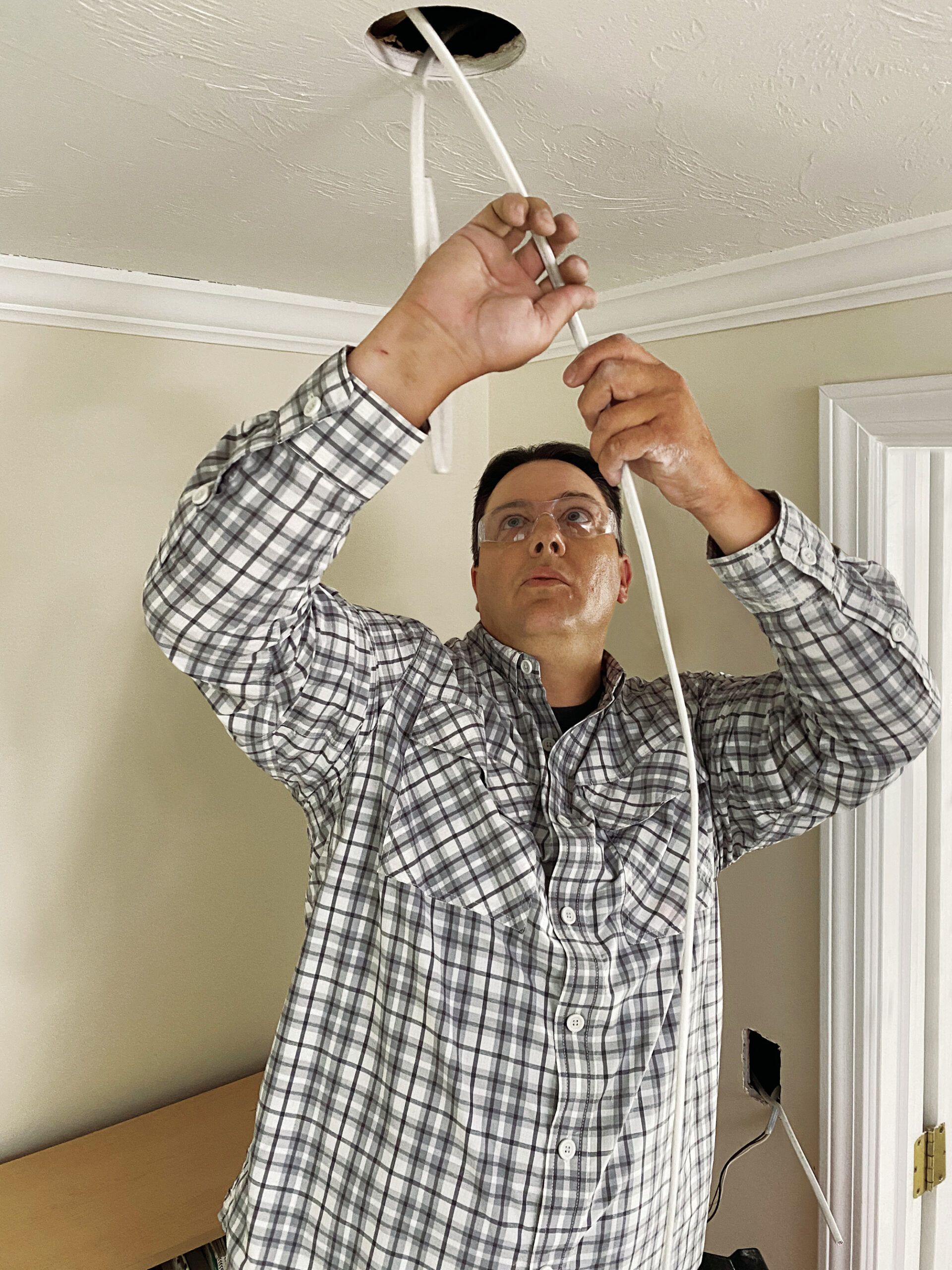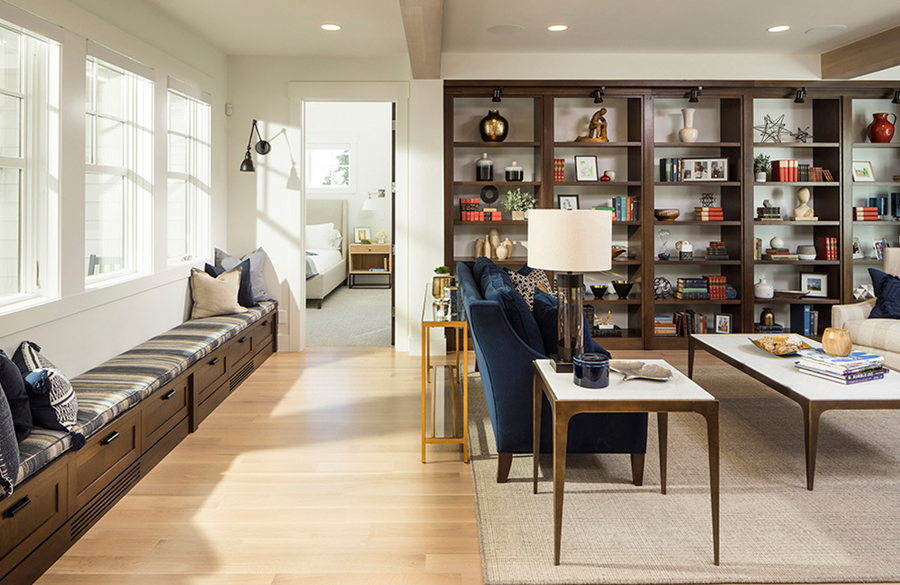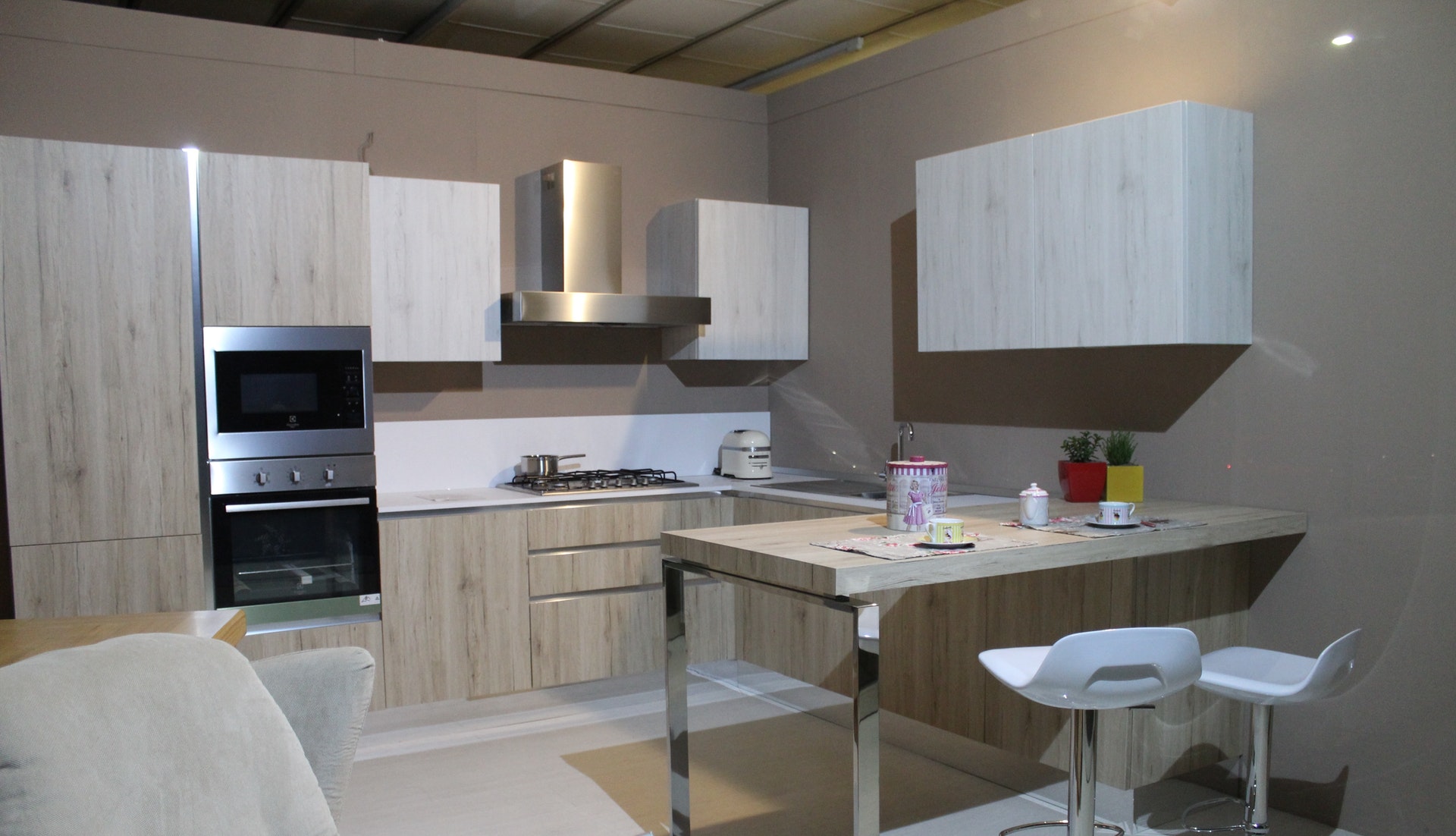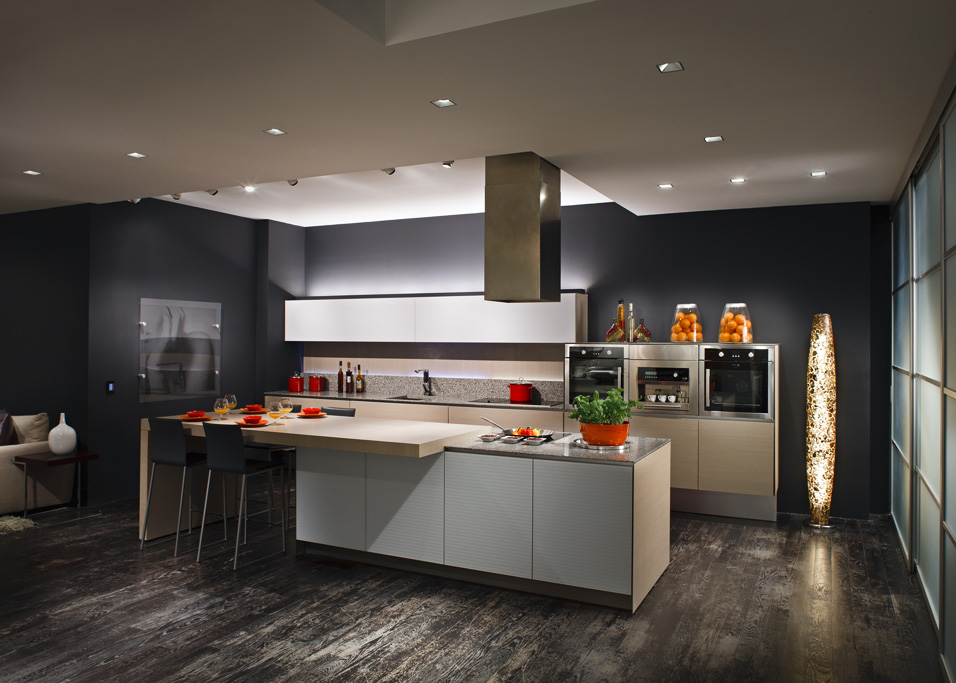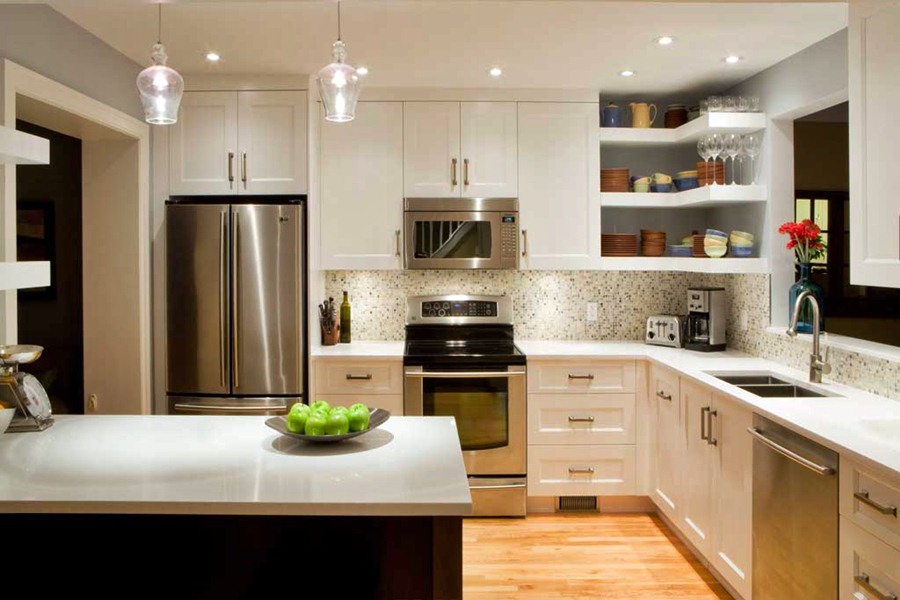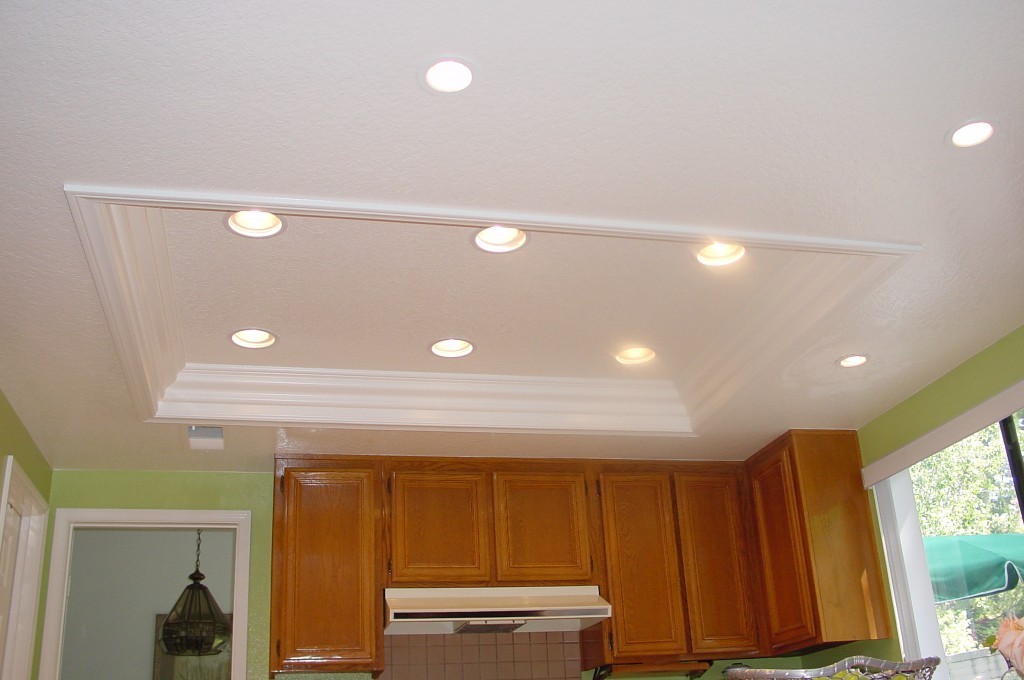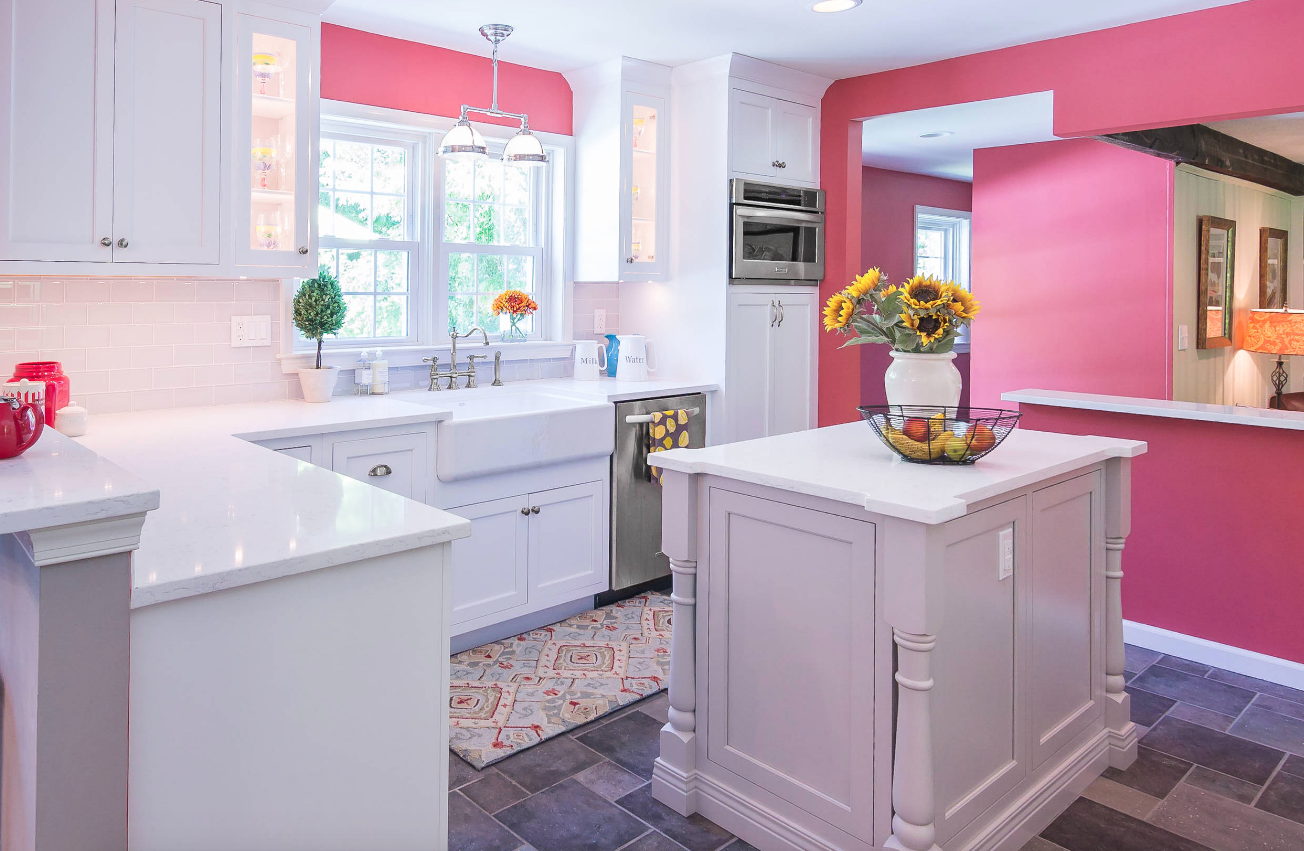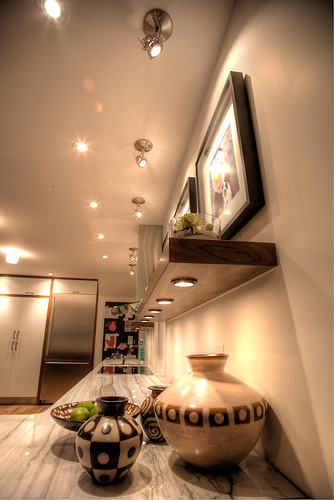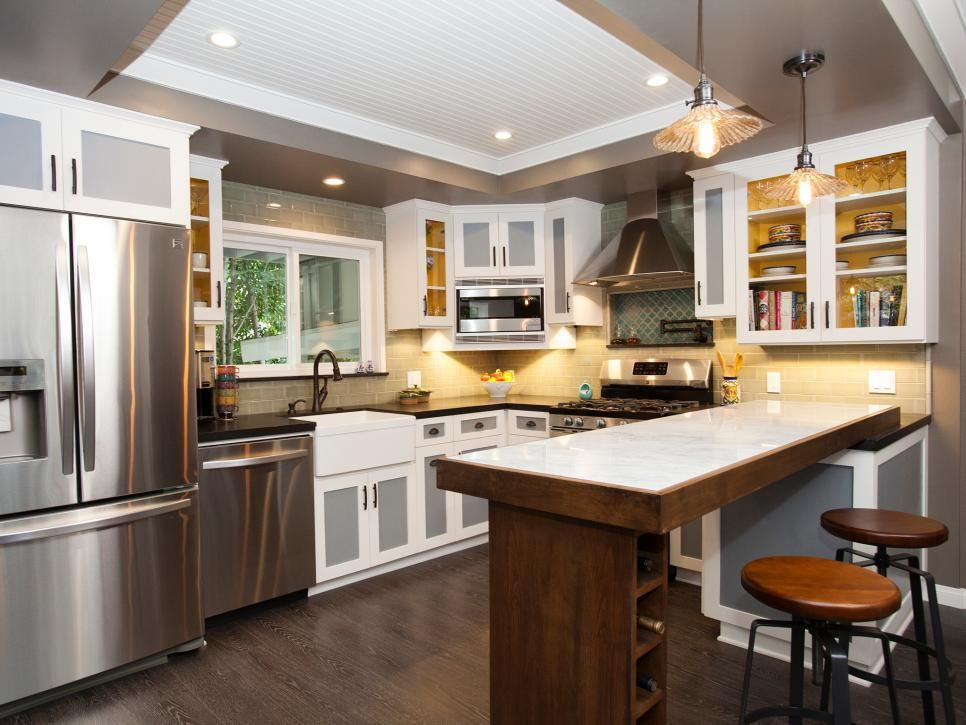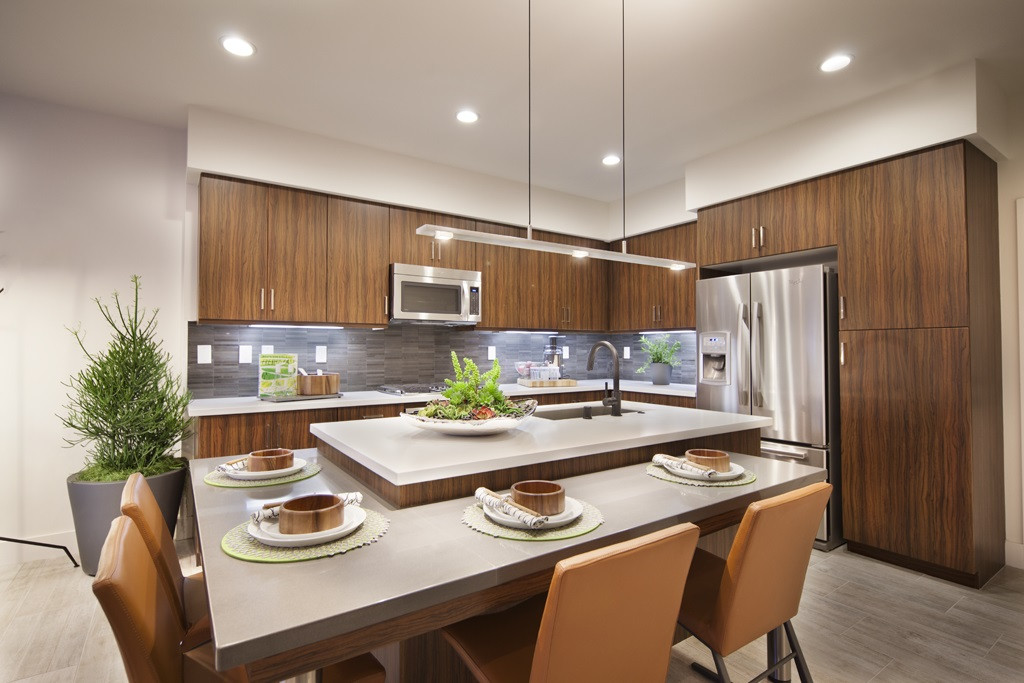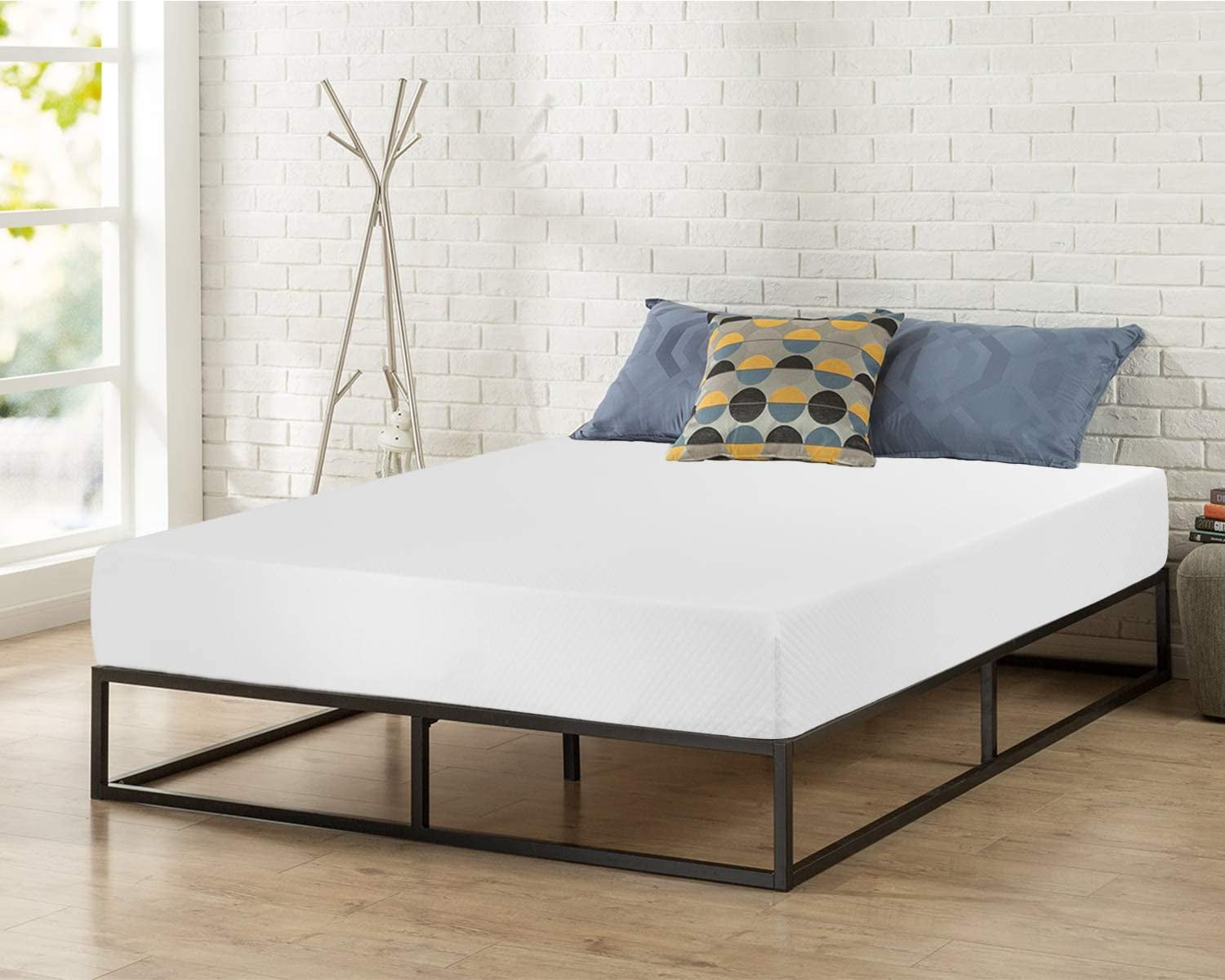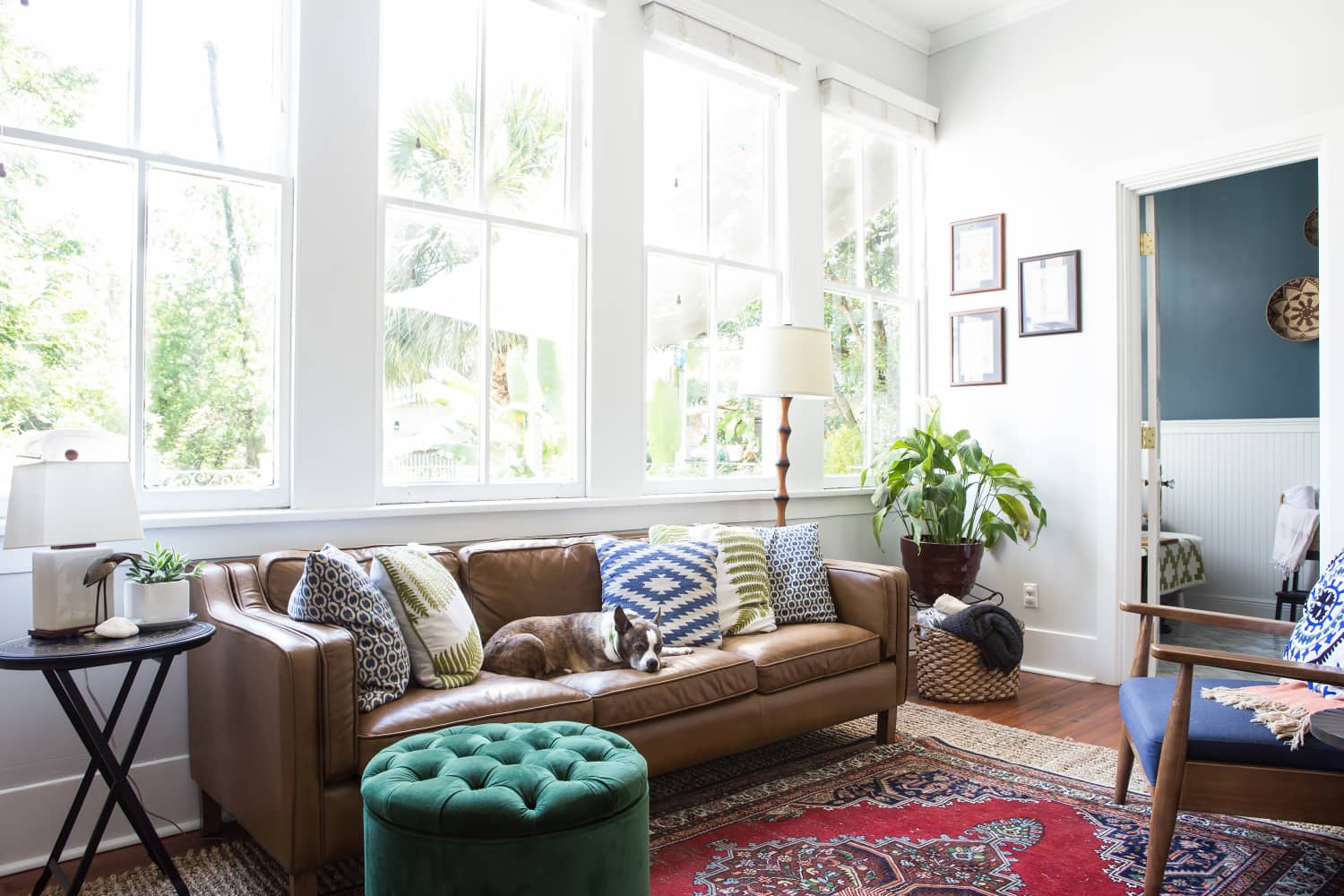The placement of recessed lights in a kitchen is crucial in creating an efficient and well-lit space. The right placement can enhance the functionality and aesthetics of your kitchen. There are a few key factors to consider when determining where to install recessed lights in your kitchen. First, consider the layout of your kitchen. The lights should be strategically placed to provide adequate illumination in all areas, including the countertops, sink, and stove. It's important to ensure that there are no dark spots in your kitchen where tasks may be difficult to see. Secondly, think about the height of your ceiling. The higher the ceiling, the more space you have to work with in terms of recessed light placement. However, if your ceiling is lower, you may need to be more strategic in your placement to avoid creating a cluttered look. Lastly, consider the placement of other lighting fixtures in your kitchen. Recessed lights should complement and enhance the existing lighting, rather than compete with it. Take into account the location of pendant lights, chandeliers, and under-cabinet lighting when deciding where to place your recessed lights.1. Recessed Lighting Placement in a Kitchen
Now that you have a general idea of what to consider when placing recessed lights in a kitchen, let's dive into the specific locations that work best for these types of fixtures. The most common location for recessed lights in a kitchen is above the sink. This provides direct lighting for tasks such as washing dishes and preparing food. Placing lights above the sink also creates a focal point and adds depth to the space. Another popular location is above the countertops. This provides ample task lighting for cooking and food prep. It's best to space these lights evenly along the length of the countertops to avoid any dark spots. For kitchens with an island, consider placing recessed lights above it. This not only adds additional task lighting, but also creates a cozy and inviting atmosphere for dining and entertaining. If your kitchen has a breakfast nook or dining area, recessed lights can also be placed above the table for ambient lighting. Lastly, consider installing recessed lights in the ceiling above the stove. This not only provides task lighting for cooking, but also adds a stylish touch to the space.2. Best Locations for Recessed Lights in a Kitchen
While there are recommended locations for recessed lights in a kitchen, the optimal placement may vary depending on the size and layout of your space. To determine the best placement, consider the following tips: 1. Use a tape measure to mark the center of each recessed light location. This will help you visualize where the lights will be placed and ensure they are evenly spaced. 2. Consider the beam angle of the recessed lights. This determines the spread of light and can affect the placement. Generally, lights with a wider beam angle are better suited for larger spaces, while narrower beams work well in smaller areas. 3. Take into account the height of your ceiling. For higher ceilings, consider using adjustable recessed lights to direct the light downwards. For lower ceilings, opt for lights with a wider beam angle to provide more coverage. 4. Experiment with different placement options before making a final decision. You may find that slightly adjusting the placement of the lights can make a big difference in the overall lighting of your kitchen.3. How to Determine the Optimal Placement for Recessed Kitchen Lights
Installing recessed lights in a kitchen is a relatively straightforward process, but it's important to take the necessary precautions to ensure a safe and successful installation. Here are a few tips to keep in mind: 1. Before starting, make sure you have all the necessary tools and materials. These may include a ladder, drill, recessed light housing, wiring, and a hole saw. 2. Turn off the power to the room where you will be installing the lights. It's also a good idea to use a voltage tester to ensure the power is off before beginning any work. 3. Measure and mark the locations for the lights on the ceiling, following the guidelines mentioned in the previous section. 4. Use a hole saw to cut the holes for the lights. Make sure to follow the manufacturer's instructions for the appropriate size and depth of the holes. 5. Connect the wiring from the lights to the power source, making sure to follow proper electrical safety procedures. 6. Install the recessed light housing into the hole and secure it in place. 7. Install the trim and bulb according to the manufacturer's instructions. 8. Turn the power back on and test the lights to ensure they are working properly.4. Tips for Installing Recessed Lights in a Kitchen
Proper spacing is crucial to creating a well-lit and balanced kitchen. The ideal spacing between recessed lights will depend on the size of the lights and the height of the ceiling. As a general rule, recessed lights should be placed 4 to 6 feet apart in the kitchen. For example, if your kitchen is 12 feet long, you would want to space the lights 3 to 4 feet apart. If your ceiling is 8 feet high, the lights should be placed 2 to 3 feet away from the wall. It's also important to consider the placement of other lighting fixtures in the space. For example, if you have pendant lights or chandeliers, you may want to space the recessed lights a bit further apart to avoid overcrowding the ceiling.5. Ideal Spacing for Recessed Kitchen Lights
The size and number of recessed lights needed for your kitchen will depend on the size and layout of the space. As a general rule, you should have one recessed light for every 4 to 6 square feet of ceiling space. The size of the lights will also affect the overall lighting in your kitchen. Larger lights with a wider beam angle will provide more coverage, while smaller lights with a narrower beam angle may require more lights to adequately illuminate the space. It's also important to consider the wattage of the bulbs you choose. For task lighting, opt for brighter bulbs, while for ambient lighting, choose bulbs with a softer glow.6. Choosing the Right Size and Number of Recessed Lights for Your Kitchen
While installing recessed lights in a kitchen may seem like a simple task, there are a few common mistakes that can easily be avoided: 1. Improper spacing: As mentioned previously, spacing is crucial to achieving the right lighting in a kitchen. Avoid overcrowding the ceiling with too many lights, or leaving dark spots by not spacing them evenly. 2. Incorrect size and placement: Choosing the wrong size or placing the lights too close to the walls or cabinets can create an unbalanced and cluttered look in the kitchen. 3. Forgetting to turn off the power: This is a crucial step in any electrical work and should never be overlooked. Always double-check that the power is off before beginning any installation. 4. Using the wrong type of recessed lights: There are various types of recessed lights available, such as IC-rated for insulation contact, airtight, and damp-rated for areas with moisture. Make sure to choose the right type for your specific kitchen needs.7. Common Mistakes to Avoid When Installing Recessed Kitchen Lights
Recessed lights are not just functional, they can also add a touch of style and creativity to your kitchen. Here are a few ideas to get you inspired: 1. Create a focal point by placing recessed lights above a statement piece, such as a kitchen island or dining table. 2. Use dimmer switches to control the brightness and mood of the lights, especially in areas where you may want more ambient lighting, such as a dining area. 3. Install recessed lights inside of cabinets or shelves to showcase your dishware or add a subtle glow to your kitchen. 4. Place recessed lights in a pattern, such as a grid or diagonal, for a unique and modern look.8. Creative Ways to Use Recessed Lights in a Kitchen
If you already have existing lighting in your kitchen, but want to upgrade to recessed lights, there are a few options available. One option is to use retrofit kits, which allow you to convert your existing fixtures into recessed lights without the need for any wiring or cutting into your ceiling. Another option is to hire a professional electrician to install new wiring and recessed lights, which may be necessary if your current lighting is outdated or not suitable for your desired layout.9. How to Retrofit Existing Kitchen Lighting with Recessed Lights
There are numerous benefits to installing recessed lights in a kitchen, including: 1. More efficient and focused lighting for specific tasks, such as cooking and food prep. 2. A sleek and modern look that can enhance the overall design of your kitchen. 3. The ability to control the brightness and mood of the space with dimmer switches. 4. The flexibility to add additional lighting in the future, if needed. 5. Increased home value, as recessed lighting is a desirable feature for many homebuyers.10. The Benefits of Recessed Lighting in a Kitchen
The Importance of Recessed Kitchen Light Location

Creating a Functional and Aesthetic Kitchen Design
:max_bytes(150000):strip_icc()/kitchenrecessedlighting-GettyImages-155383268-dec5caad600541ff81cbdd6d06846c66.jpg) When designing a kitchen, there are many factors to consider. From the layout and materials to the color scheme and appliances, every detail plays a significant role in creating a functional and aesthetically pleasing space. One crucial element that often gets overlooked is the
lighting
. And when it comes to lighting, the
location
of recessed kitchen lights is key.
Recessed lights, also known as can lights or pot lights, are a popular choice for kitchens due to their sleek and modern look. These lights are installed directly into the ceiling, creating a seamless and clean appearance. But the placement of these lights is crucial in achieving the desired effect for your kitchen.
When designing a kitchen, there are many factors to consider. From the layout and materials to the color scheme and appliances, every detail plays a significant role in creating a functional and aesthetically pleasing space. One crucial element that often gets overlooked is the
lighting
. And when it comes to lighting, the
location
of recessed kitchen lights is key.
Recessed lights, also known as can lights or pot lights, are a popular choice for kitchens due to their sleek and modern look. These lights are installed directly into the ceiling, creating a seamless and clean appearance. But the placement of these lights is crucial in achieving the desired effect for your kitchen.
Strategic Placement for Maximum Illumination
 The primary purpose of recessed kitchen lights is to provide ample
illumination
for tasks such as meal prep and cooking. Therefore, it is vital to strategically place them in areas where you need the most light. Typically, this includes above the sink, stove, and countertops. Placing recessed lights in these areas will ensure that you have sufficient light to work efficiently and safely.
Another crucial factor to consider is the
size
and
spacing
of the recessed lights. The size of the light will determine the area it can cover, while proper spacing will ensure that there are no dark spots or shadows in your kitchen. A good rule of thumb is to have a light every 4-6 feet, depending on the size of your kitchen.
The primary purpose of recessed kitchen lights is to provide ample
illumination
for tasks such as meal prep and cooking. Therefore, it is vital to strategically place them in areas where you need the most light. Typically, this includes above the sink, stove, and countertops. Placing recessed lights in these areas will ensure that you have sufficient light to work efficiently and safely.
Another crucial factor to consider is the
size
and
spacing
of the recessed lights. The size of the light will determine the area it can cover, while proper spacing will ensure that there are no dark spots or shadows in your kitchen. A good rule of thumb is to have a light every 4-6 feet, depending on the size of your kitchen.
Enhancing the Aesthetic Appeal
 Aside from providing functional illumination, recessed kitchen lights can also enhance the aesthetic appeal of your kitchen. By placing them in strategic locations, you can create a
layered
and
dramatic
lighting effect. For example, placing recessed lights above your cabinets or inside glass-front cabinets can add a warm glow and highlight your kitchen's design elements.
Moreover, by choosing the right
color temperature
for your recessed lights, you can create a specific mood in your kitchen. For a warm and cozy feel, opt for
2700K
bulbs, while
3000K
bulbs will provide a cooler and more energizing ambiance.
Aside from providing functional illumination, recessed kitchen lights can also enhance the aesthetic appeal of your kitchen. By placing them in strategic locations, you can create a
layered
and
dramatic
lighting effect. For example, placing recessed lights above your cabinets or inside glass-front cabinets can add a warm glow and highlight your kitchen's design elements.
Moreover, by choosing the right
color temperature
for your recessed lights, you can create a specific mood in your kitchen. For a warm and cozy feel, opt for
2700K
bulbs, while
3000K
bulbs will provide a cooler and more energizing ambiance.
Conclusion
 In conclusion, the
location
of recessed kitchen lights is a crucial consideration in creating a functional and aesthetically pleasing kitchen design. By strategically placing these lights and paying attention to their size, spacing, and color temperature, you can achieve both practical and visual benefits. So, next time you plan a kitchen renovation or redesign, remember to give proper attention to the placement of your recessed lights. Your kitchen will thank you.
In conclusion, the
location
of recessed kitchen lights is a crucial consideration in creating a functional and aesthetically pleasing kitchen design. By strategically placing these lights and paying attention to their size, spacing, and color temperature, you can achieve both practical and visual benefits. So, next time you plan a kitchen renovation or redesign, remember to give proper attention to the placement of your recessed lights. Your kitchen will thank you.

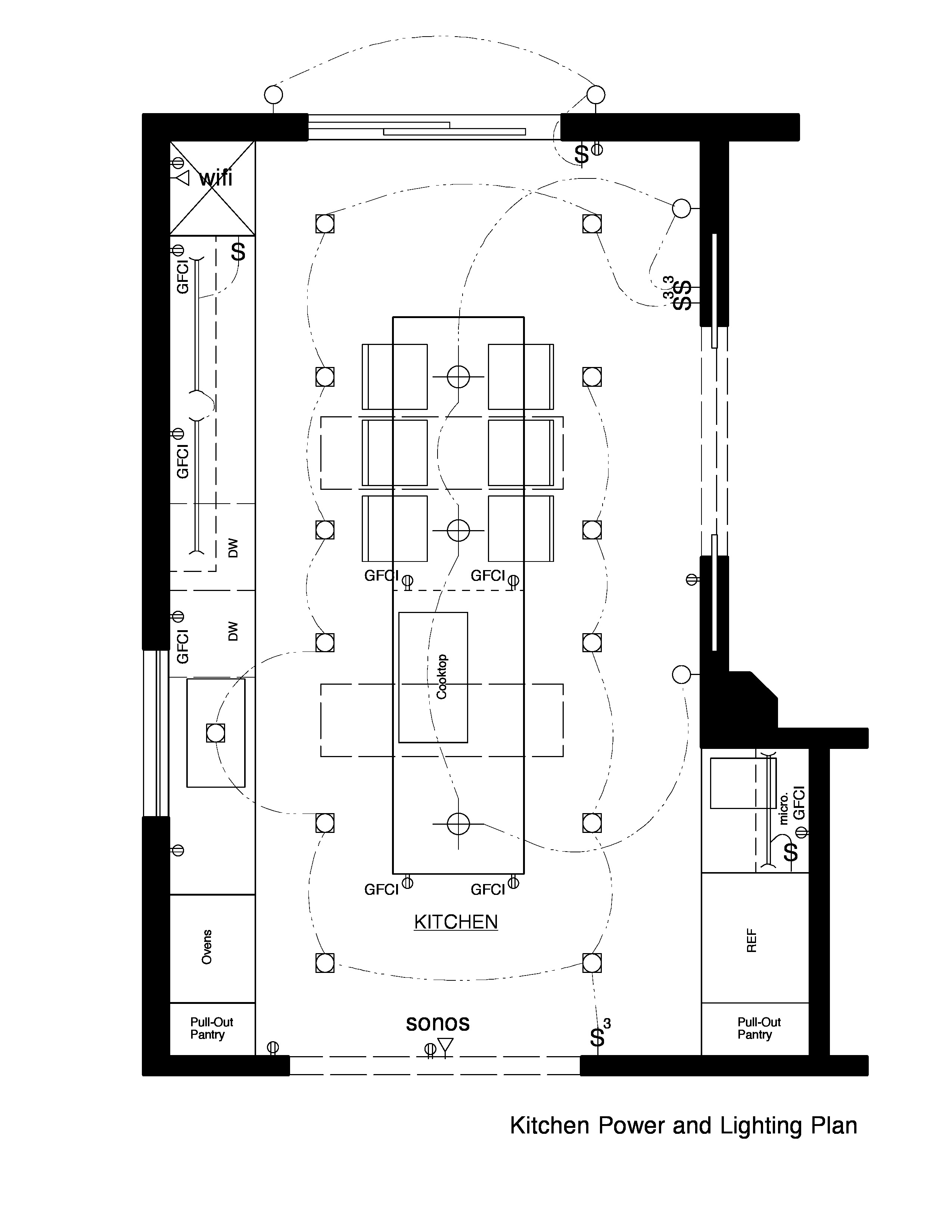






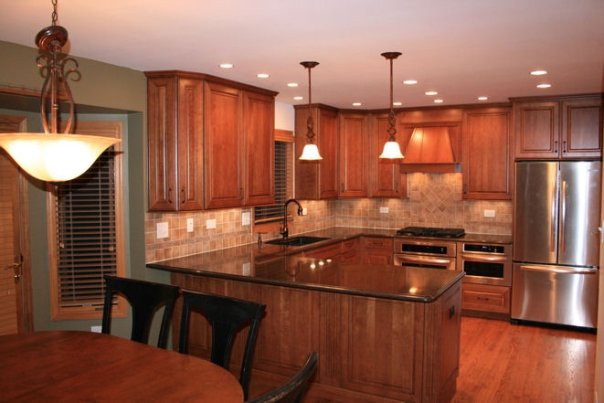
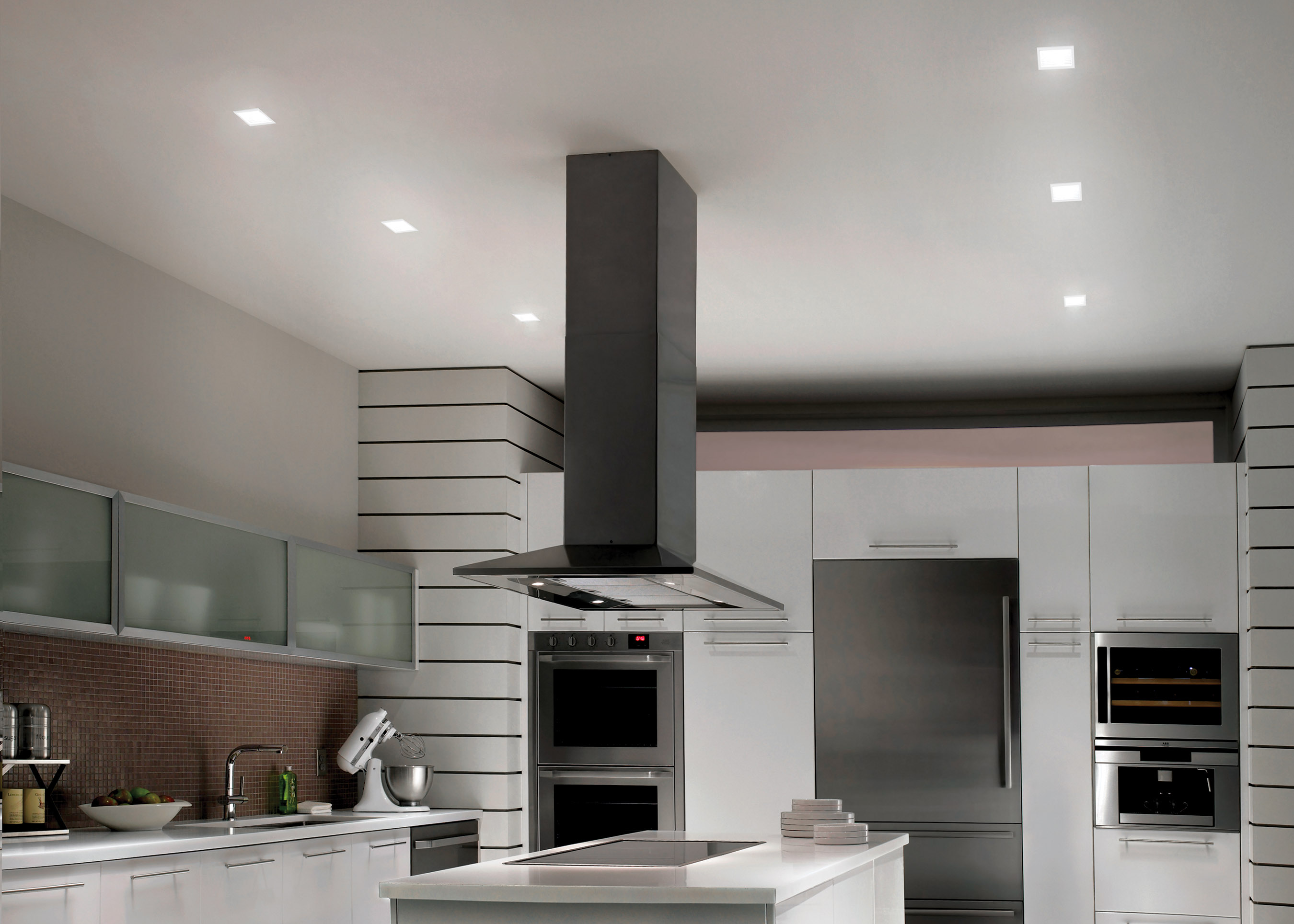



:max_bytes(150000):strip_icc()/185006363-56a5a6425f9b58b7d0ddd374.jpg)
